I had trained my model on KNN classification algorithm , and I was getting around 97% accuracy. However,I later noticed that I had missed out to normalise my data and I normalised my data and retrained my model, now I am getting an accuracy of only 87%. What could be the reason? And should I stick to using data that is not normalised or should I switch to normalized version.
-
1This is a question for http://stats.stackexchange.com. – a_guest Feb 07 '17 at 14:37
-
Accuracy on training dataset alone is not by itself a good measure of the quality of a model. To answer your questions and guide your work, you need to also use a different dataset than what you trained the model on, a so-called validation dataset or a testing dataset. – Geoffrey Anderson Feb 07 '17 at 15:41
3 Answers
To answer your question, you first need to understand how KNN works. Here is a simple diagram:
Supposed the ? is the point you are trying to classify into either red or blue. For this case lets assume you haven't normalized any of the data. As you can see clearly the ? is closer to more red dots than blue bots. Therefore, this point would be assumed to be red. Lets also assume the correct label is red, therefore this is a correct match!
Now, to discuss normalization. Normalization is a way of taking data that is slightly dissimilar but giving it a common state (in your case think of it as making the features more similar). Assume in the above example that you normalize the ?'s features, and therefore the output y value becomes less. This would place the question mark below it's current position and surrounded by more blue dots. Therefore, your algo would label it as blue, and it would be incorrect. Ouch!
Now to answer your questions. Sorry, but there is no answer! Sometimes normalizing data removes important feature differences therefore causing accuracy to go down. Other times, it helps to eliminate noise in your features which cause incorrect classifications. Also, just because accuracy goes up for the data set your are currently working with, doesn't mean you will get the same results with a different data set.
Long story short, instead of trying to label normalization as good/bad, instead consider the feature inputs you are using for classification, determine which ones are important to your model, and make sure differences in those features are reflected accurately in your classification model. Best of luck!
- 52,766
- 11
- 101
- 134
- 5,435
- 5
- 35
- 57
That is unexpected at first glance because usually a normalization will help a KNN classifier do better. Generally, good KNN performance usually requires preprocessing of data to make all variables similarly scaled and centered. Otherwise KNN will be often be inappropriately dominated by scaling factors.
In this case the opposite effect is seen: KNN gets WORSE with scaling, seemingly.
However, what you may be witnessing could be overfitting. The KNN may be overfit, which is to say it memorized the data very well, but does not work well at all on new data. The first model might have memorized more data due to some characteristic of that data, but it's not a good thing. You would need to check your prediction accuracy on a different set of data than what was trained on, a so-called validation set or test set.
Then you will know whether the KNN accuracy is OK or not.
Look into learning curve analysis in the context of machine learning. Please go learn about bias and variance. It's a deeper subject than can be detailed here. The best, cheapest, and fastest sources of instruction on this topic are videos on the web, by the following instructors:
Andrew Ng, in the online coursera course Machine Learning
Tibshirani and Hastie, in the online stanford course Statistical Learning.
- 57,590
- 26
- 140
- 166
- 1,534
- 17
- 25
-
1Thank you for the answer , i am using k fold validation, and trying to train the data on different dataset and even then for each fold i am getting the similar sort of accuracy. – Jibin Mathew Mar 03 '17 at 18:06
If you use normalized feature vectors, the distances between your data points are likely to be different than when you used unnormalized features, particularly when the range of the features are different. Since kNN typically uses euclidian distance to find k nearest points from any given point, using normalized features may select a different set of k neighbors than the ones chosen when unnormalized features were used, hence the difference in accuracy.
- 21,482
- 2
- 51
- 63
